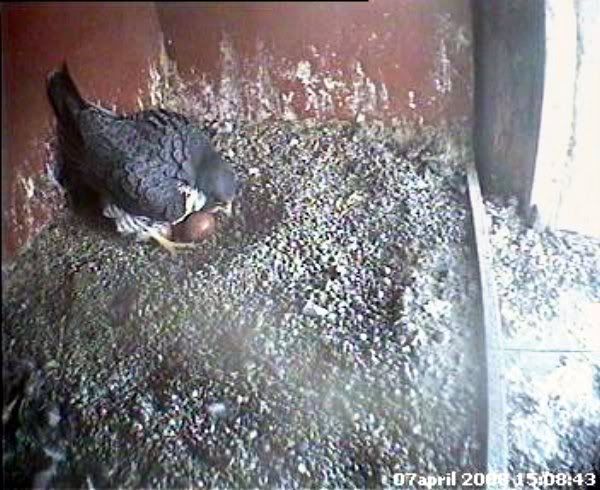
Remember the Eemsmond nestsite?
The female laid her first egg om March 12, and completed her clutch of 4 on March 20. With no breaks incubation went on for 35 days without a hatch. Both parents continued incubation during April, May en June. It was clear that something was very wrong.
On July 1 the 4 eggs were taken from the nestbox.
They were scanned and it turned out that there were no embryo's in either of the 4 eggs. Of course after 103 days of incubation the contents of the egg were in a severe state of decomposition. That's why it is not possible to find traces of sperm. The eggs turned out not to be viable.
We have all seen that the 2 peregrines mated. We think the male peregrine is not a new one. But if he is and still immature, that could be a cause of eggs being not viable. He does not have a band, so it is very difficult to be sure.
There are lots of possibilities that cause not viable eggs.
Peregrine falcons stay fertile until their dying day. And when they are sick which could cause infertility they do not mate and do not lay eggs.
During the DDT crisis many eggs were not viable because of this horrible stuff prevented the fertility of the female. And caused thin eggshell which caused an early death of th embryo.
Enviromental polution is still a serious danger to the Peregrine falcon. New enviromental toxins like Deca-BDE, PCB have already been measured in peregrine falcons in very high dosages, as well as in many other species, humans included.
Beside this there a lot of micro organisms ( virus, bacteria, parasites) which can cause death of the blastoderm before it becomes an embryo. This is visible by a bloodring in the eggcontent. But after such a long incubation and a decomposed content it is impossible to say what caused these egg to be not viable. And that's a shame. We sure would have liked to know what caused this.










No comments:
Post a Comment